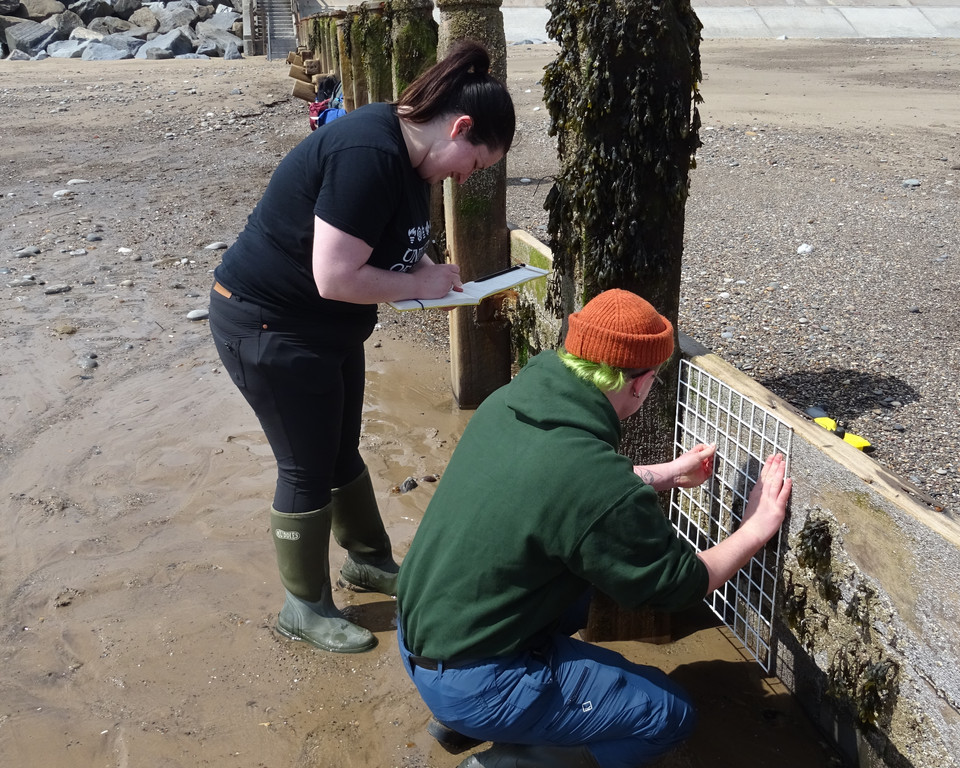New habitat created for East Riding's coastal wildlife
Mon 31st October 2022
New habitat for limpets, barnacles, sea anemones and more has been created on Hornsea and Withernsea beaches, as part of a regional scheme. East Riding of Yorkshire Council, in collaboration with the Yorkshire Marine Nature Partnership and the University of Hull, are testing how small changes to timber groynes on beaches can make a big difference to coastal wildlife.
Heather Davison-Smith, from the Yorkshire Marine Nature Partnership, said: “This is a really innovative trial to learn about how we can improve our coastline and support marine wildlife in a changing climate. Using simple techniques, we can greatly enhance these areas for nature without affecting the important role the groynes play in coastal protection. We’ll be working with the University of Hull to monitor species colonisation in the long-term and explore how the techniques might be used elsewhere.”
Dr Sue Hull, who is leading the monitoring programme with students from the University of Hull, continued: “This is an ideal opportunity for our students to gain valuable experience working in the coastal environment and we are really excited by the opportunity to conduct this research. We have had some success with adding new habitat to rocky sea defences in other areas, but this is the first opportunity we have had to try simple cost-effective modifications on wooden groynes that may help conserve some of our marine wildlife.”
Timber groynes are a well-known feature of the East Riding coastline. They work by trapping sand and sediment, which helps to maintain the beaches and slow the natural erosion process. As part of the Concrete Coast project, funded by the Environment Agency, the council has worked with specialist contractors to drill numerous shallow holes into selected timbers of the southernmost groynes at Hornsea and Withernsea.
Councillor Chris Matthews, portfolio holder for environment and climate change at East Riding of Yorkshire Council said: ”We’re pleased to support this work with our specialist contractors and explore new opportunities for nature recovery at the coast. Our coastal defences are an important asset to local communities and businesses, but they can also be a key habitat for coastal wildlife and help us to understand more about the marine environment.”
These additions have no impact on how the groynes work, but they will provide more opportunity for small intertidal species to establish new colonies. It is hoped that, in the long-term, adding more texture to the groynes will increase the diversity of intertidal species and support the wider marine ecosystem.
Allison Pierre, project lead for the Environment Agency, said: ”This is a fantastic project, increasing the ecological value of the structures on the coastline; replacing and mimicking natural habitats that have been lost over time. This trial will further our understanding about how we can make small changes to artificial structures in order to have a really positive impact on marine wildlife.”

